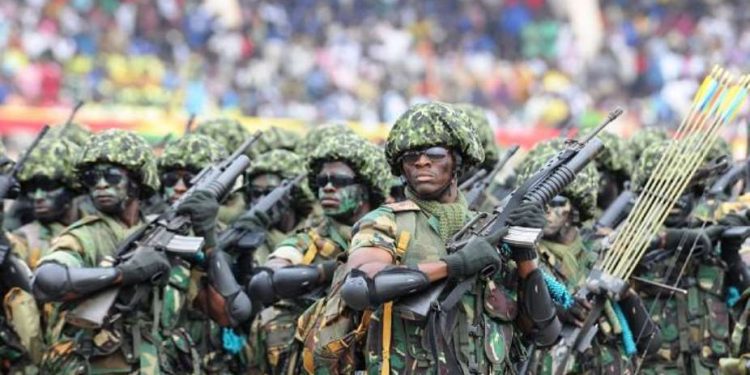In July 2025, the late Minister of Defence, Dr. Omane Boamah, announced a landmark reform: the digitalisation of recruitment into the Ghana Armed Forces (GAF). The move was hailed as a step toward transparency and efficiency, with the application portal opening in October. Yet, what should have been a moment of progress has instead sparked heated debate, particularly over the strict age eligibility criteria.
According to the GAF, applicants must “be not less than 18 years of age and not more than 25 years for Non–Tradesmen and not more than 27 years for Tradesmen by 30 December 2025.” This policy effectively closes the door to many willing and capable Ghanaians who fall outside this narrow bracket. The backlash has been swift. Members of Parliament such as Rockson-Nelson Dafeamekpor and Samuel Nartey George have openly criticised the policy, arguing that it unfairly excludes citizens who are still physically fit and eager to serve. Dafeamekpor has even threatened legal action, insisting that the age limit contradicts Ghana’s own National Youth Authority Act, which defines youth as persons up to 35 years old
The controversy raises a fundamental question: why do militaries impose age limits at all? Globally, advanced military powers often prefer younger recruits because of their physical resilience, adaptability, and long service potential. Analysts note that younger soldiers are more likely to withstand the rigours of training, adapt quickly to new technologies, and serve for decades, providing a return on the investment in their training. Moreover, a youthful military is often seen as a symbol of national vitality and readiness. However, international comparisons reveal that Ghana’s limits are unusually restrictive. In the United States, enlistment is open from 17 (with parental consent) up to 35 years, depending on the branch. In the United Kingdom, the maximum age for regular enlistment is 36, while in France it extends to 30 for most roles. These examples suggest that Ghana’s ceiling of 25–27 years is not only out of step with global practice but also unnecessarily exclusionary in a country where many young people complete tertiary education or vocational training in their late twenties.
Should Ghana’s case be different? Advocates for reform argue yes. If the African and Ghanaian definition of youth extends to 35 years, then the GAF should align its recruitment policy accordingly. This would not only broaden the pool of applicants but also ensure that the military benefits from the skills, maturity, and discipline of slightly older recruits. Medical fitness, rather than age alone, could serve as the decisive criterion.
Beyond age, other eligibility requirements also deserve reconsideration. The current height restrictions—1.68m for males and 1.57m for females, with even higher thresholds for Military Police—reflect outdated notions of military physique. In an era of technological warfare, where airpower, drones, and cyber defence dominate, agility, stealth, and technical expertise may matter more than towering height. A more flexible approach could open the door to capable recruits who might otherwise be excluded.
Meanwhile, IMANI’s July 20–26 CAGI report has already influenced positive change by pushing for decentralised recruitment. This year, recruitment centres have been spread across all regions to reduce overcrowding. Yet, IMANI has gone further, calling for district-level centres and even all-year-round application opportunities. Such reforms would not only ease access but also allow high school cadet corps members who already demonstrate discipline and patriotism to transition smoothly into the armed forces. Prioritising these cadet applicants, with attestations from their schools, could boost morale and inspire a new generation of service-minded youth. The debate over recruitment is not just about numbers; it is about the kind of military Ghana wants to build. A rigidly youthful army may look efficient on paper, but it risks excluding capable citizens who could bring valuable skills and experience. A more inclusive approach—balancing youth with maturity, and physical standards with technological needs—would better reflect Ghana’s realities and aspirations.
As the GAF modernises its recruitment through digitalisation, it must also modernise its mindset. The future of Ghana’s defence lies not in arbitrary age and height limits but in a flexible, inclusive system that values fitness, skill, and commitment above all else.
Credit- IMANI’s Critical Analysis of Governance and Economic Issues











